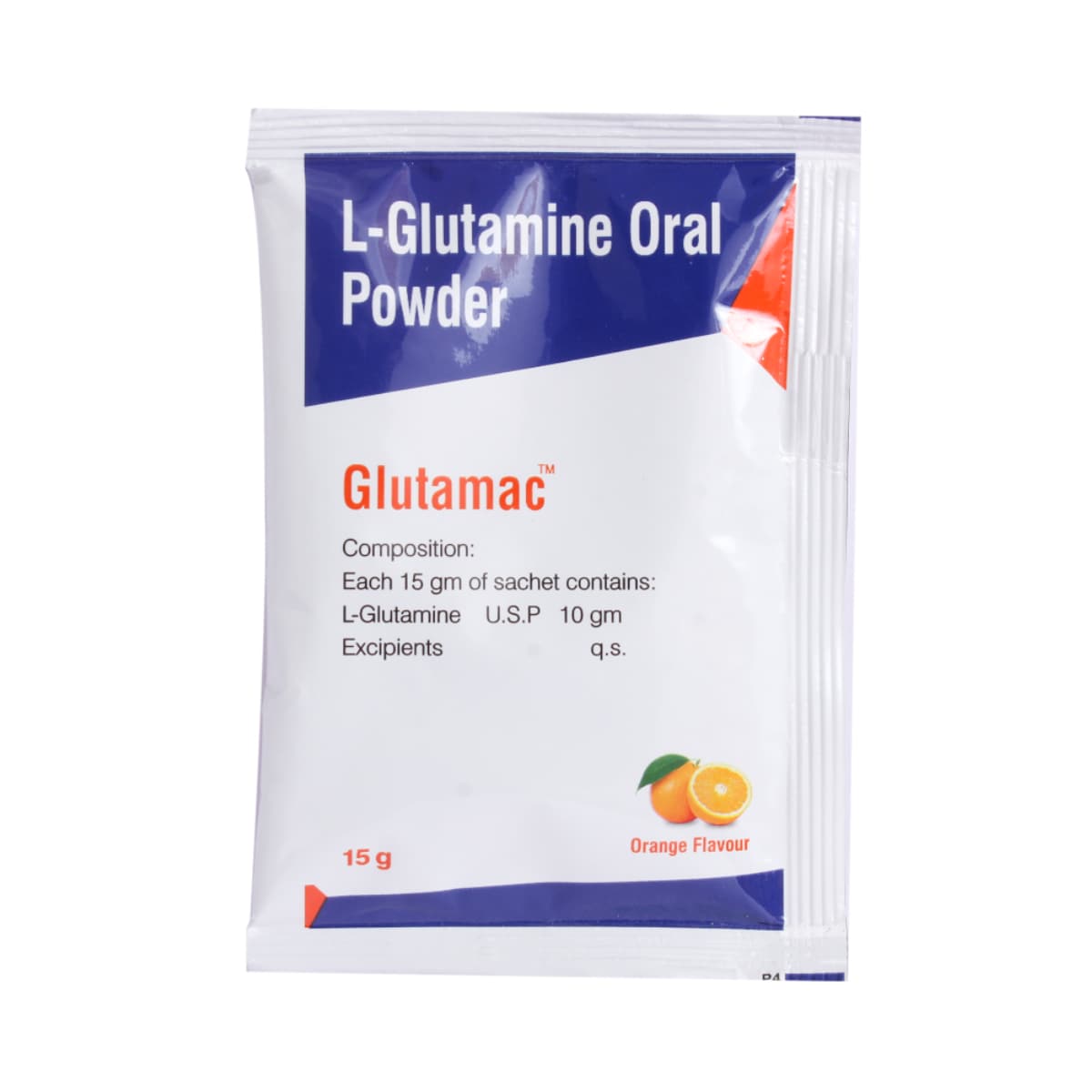Gluyell Sachet 15Gm


MRP ₹164
(Inclusive of all Taxes)
₹24.6 Cashback (15%)
Provide Delivery Location
Online payment accepted
 Prescription drug
Prescription drugWhats That
Composition :
Manufacturer/Marketer :
Consume Type :
Return Policy :
Expires on or after :
About Gluyell Sachet
Gluyell Sachet belongs to the class of 'nutraceutical products', primarily used to treat glutamine deficiency. Glutamine deficiency is a condition caused by low levels of glutamine. Glutamine is an amino acid that helps maintain various physiological functions of the body. Symptoms of glutamine deficiency include increased susceptibility to infections, bowel changes, diarrhoea, ulcers, and weight loss.
Gluyell Sachet contains L- Glutamine or Levo-Glutamine, an amino acid. It helps improve the immune system, maintains healthy gut functioning, improves muscle mass and exercise performance. It is also useful in balancing various physiological functions during times of stress.
Your doctor will decide the dosage based on your medical condition. Sometimes, Gluyell Sachet may have common side effects like stomach pain, nausea, vomiting, headache, and dizziness. These side effects do not require medical attention and gradually resolve over time. However, if these side effects persist for a longer time, please seek medical advice.
Let your doctor know if you use any other medicines and herbal products before starting Gluyell Sachet. If you are allergic to Gluyell Sachet or its inactive components, please inform your doctor. Gluyell Sachet is not recommended if the patient has end-stage liver or kidney diseases, cancer, Reye's syndrome (swelling in the liver and brain), bipolar disorder or any conditions where protein intake is restricted. Pregnant and breastfeeding women should consult the doctor before starting Gluyell Sachet. It is advised to avoid driving until you feel better since Gluyell Sachet can cause dizziness and interfere with your driving ability. Limit alcohol consumption while using Gluyell Sachet to ensure maximum absorption and prevent unwanted side effects. Gluyell Sachet should be used for children only when the doctor has advised it.
Uses of Gluyell Sachet
Directions for Use
Medicinal Benefits
Gluyell Sachet is used to treat glutamine deficiency. It contains L-Glutamine or Levo-Glutamine, a naturally occurring amino acid. L-Glutamine helps improve the immune system, maintains healthy gut functioning, improves muscle mass and exercise performance. It is also useful in balancing various physiological functions during times of stress. It enhances nervous system functioning and stabilizes brain impulses. It heals irritable bowel syndrome issues and prevents leaky gut.
Storage
- Inform your doctor about your constipation symptoms. They may adjust your medication or advise alternative treatments.
- Stay hydrated by drinking sufficient of water (at least 8-10 glasses a day) to help soften stool and promote bowel movements.
- Increase fibre intake by eating foods high in fibre, such as fruits, whole grains, vegetables and legumes, to help bulk up the stool.
- Establish a bowel routine by trying to go to the bathroom at the same time each day to train your bowels.
- Engaging in regular exercise, like walking or yoga, can support in bowel movement stimulation.
- Consult your doctor if constipation persists, and discuss alternative treatments or adjustments to your medication.
- Inform your doctor about the nausea and discuss possible alternatives to the medication or adjustments to the dosage.
- Divide your daily food intake into smaller, more frequent meals to reduce nausea.
- Opt for bland, easily digestible foods like crackers, toast, plain rice, bananas, and applesauce.
- Avoid certain foods that can trigger nausea, such as fatty, greasy, spicy, and smelly foods.
- Drink plenty of fluids, such as water, clear broth, or electrolyte-rich beverages like coconut water or sports drinks.
- Use ginger (tea, ale, or candies) to help relieve nausea.
- Get adequate rest and also avoid strenuous activities that can worsen nausea.
- Talk to your doctor about taking anti-nausea medication if your nausea is severe.
- Record when your nausea occurs, what triggers it, and what provides relief to help you identify patterns and manage your symptoms more effectively.
- Drink water or other clear fluids.
- To prevent worsening of pain, limit intake of tea, coffee, or alcohol.
- Include bland foods like rice, toast, crackers, and rice in your diet.
- Avoid lying down immediately after eating as it may cause indigestion or heartburn.
- Avoid acidic and spicy food as it may cause indigestion.
- Chest pain may last for a while and needs immediate medical attention as it is a significant health issue to be attended to.
- Take rest and refrain from doing physical activity for a while, and restart after a few days.
- Try applying an ice pack to the strained area for at least 20 minutes thrice a day. Ice pack thus helps reduce inflammation.
- Sit upright and maintain proper posture if there is persistent chest pain. • Use extra pillows to elevate your position and prop your chest up while sleeping.
- Take medications with food (if recommended): It can help prevent stomach distress and indigestion.
- Eat smaller, more frequent meals: Divide daily food intake into smaller, more frequent meals to ease digestion.
- Avoid trigger foods: Identify and avoid foods that trigger indigestion, such as spicy, fatty, or acidic foods.
- Stay upright after eating: Sit or stand upright for at least 1-2 hours after eating to prevent stomach acid from flowing into the oesophagus.
- Avoid carbonated drinks: Avoid drinking carbonated beverages, such as soda or beer, which can worsen indigestion.
- Manage stress: To alleviate indigestion, engage in stress-reducing activities like deep breathing exercises or meditation.
- Consult a doctor if needed: If indigestion worsens or persists, consult a healthcare professional to adjust the medication regimen or explore alternative treatments.
Drug Warnings
Gluyell Sachet is not recommended if the patient has end-stage liver or kidney diseases, cancer, Reye's syndrome (swelling in the liver and brain), bipolar disorder or any conditions where protein intake is restricted. Pregnant and breastfeeding women should consult a doctor before starting Gluyell Sachet. It is advised to avoid driving until you feel better since Gluyell Sachet can cause dizziness and interfere with your driving ability. Limit alcohol consumption while using Gluyell Sachet to ensure maximum absorption and prevent unwanted side effects. Gluyell Sachet should be used for children only when the doctor has advised it. Keep Gluyell Sachet away from direct sunlight. Do not store Gluyell Sachet above 25°C and keep it away from direct sunlight.
Drug-Drug Interactions
Drug-Drug Interactions
Login/Sign Up
Drug-Food Interactions
Drug-Food Interactions
Login/Sign Up
Diet & Lifestyle Advise
- Manage stress and sleep for at least six to eight hours to rejuvenate your body.
- Maintain a fibre-rich diet and include healthy carbohydrates from fruits, vegetables and whole grains to maintain your blood glucose levels.
- Include glutamine-rich foods like chicken, fish, cabbage, spinach, peas, beans, lentils, and tofu in your daily diet.
- Avoid smoking and alcohol consumption.
- Eat at regular intervals.
- Keep a check on your weight and exercise regularly to keep your heart healthy.
Side Effects of Gluyell Sachet
- Stomach pain
- Nausea
- Vomiting
- Headache
- Dizziness
Habit Forming
Therapeutic Class
Product Substitutes
Author Details
We provide you with authentic, trustworthy and relevant information
Drug-Diseases Interactions
Drug-Diseases Interactions
Login/Sign Up
FAQs
Gluyell Sachet is a dietary supplement that contains L-Glutamine, an amino acid. It works by replenishing the low glutamine levels in the body, thus treating glutamine deficiency. Gluyell Sachet also plays a role in maintaining various physiological functions.
Gluyell Sachet is usually not recommended if the patient has any liver or kidney diseases, cancer, Reye's syndrome (swelling in the liver and brain), and bipolar disorder. Let your doctor know if you have any other medical concerns before starting Gluyell Sachet.
Gluyell Sachet helps heal leaky gut and treat irritable bowel syndrome conditions. It is also essential in forming a healthy gut lining.
If you miss a dose, take it as soon as you remember. However, if it is time for the next scheduled dose, skip the missed dose and follow your usual dosage.
Drug-Drug Interactions Checker List
- PHENOBARBITAL
- PRIMIDONE
- VALPROIC ACID
- GABAPENTIN
- CARBAMAZEPINE
- PHENYTOIN
Special Advise
Let your doctor and the laboratory staff know if you are using Gluyell Sachet since it may interfere with laboratory tests.
Disease/Condition Glossary
Glutamine deficiency: It is a condition characterized by low levels of glutamine. Glutamine is an amino acid that helps maintain various physiological functions of the body. Glutamine deficiency can be caused due to shock or extreme stress, trauma, chemotherapy or radiotherapy, immune system disorders, and lack of L-glutamine in the diet. Symptoms of glutamine deficiency include increased susceptibility to infections, bowel changes, diarrhoea, ulcers, and weight loss.

Have a query?
Buy best Nutrition & Metabolism products by
VITAMINS AND MINERALS
OTHER SUPPLEMENTS
HEMATINICS
BONE & JOINT SUPPLEMENTS
WOMEN HEALTH SUPPLEMENTS
AMINO ACID SUPPLEMENTS
GASTRIC DISORDERS SUPPLEMENTS
IMMUNE HEALTH SUPPLEMENTS
CARDIAC SUPPLEMENTS
WEIGHT LOSS AND WEIGHT GAIN
DIABETICS SUPPLEMENTS
RESPIRATORY DISEASE SUPPLEMENTS
APPETITE SUPPRESSANTS
APPETITE STIMULANTS
NUTRITIONAL SUPPLEMENTS
Alniche Life Sciences Pvt Ltd
Abbott India Ltd
Intas Pharmaceuticals Ltd
Alkem Laboratories Ltd
Elder Pharmaceuticals Ltd
Fourrts India Laboratories Pvt Ltd
Zydus Cadila
Leeford Healthcare Ltd
Akumentis Healthcare Ltd
Cipla Ltd
La Renon Healthcare Pvt Ltd
Eris Life Sciences Ltd
Olcare Laboratories Pvt Ltd
East West Pharma India Pvt Ltd
Indoco Remedies Ltd
Lupin Ltd
Macleods Pharmaceuticals Ltd
Aristo Pharmaceuticals Pvt Ltd
Dr Reddy's Laboratories Ltd
Sun Pharmaceutical Industries Ltd
Yuventis Pharmaceuticals
Zee Laboratories Ltd
Meyer Organics Pvt Ltd
Unipark Biotech Pvt Ltd
Zydus Healthcare Ltd
Mankind Pharma Pvt Ltd
Micro Labs Ltd
Adonis Laboratories Pvt Ltd
Emcure Pharmaceuticals Ltd
Levin Life Sciences Pvt Ltd
Sanatra Healthcare Ltd
Medishri Healthcare Pvt Ltd
Anglo French Drugs & Industries Ltd
Koye Pharmaceuticals Pvt Ltd
Maxamus Pharma Pvt Ltd
Spa Newtraceuticals Pvt Ltd
Corona Remedies Pvt Ltd
Vasu Organics Pvt Ltd
DR Johns Lab Pharma Pvt Ltd
Gh Vision Care Life Sciences
Glenon Healthcare
Albert David Ltd
Apple Life Sciences
Ardent Life Sciences Pvt Ltd
BSA Pharma Inc
Biophar Lifesciences Pvt Ltd
Brio Bliss Life Science Pvt Ltd
Cadila Healthcare Ltd
Innovcare Life Sciences Pvt Ltd
Medley Pharmaceuticals Ltd
Quality Pharma
Signova Pharma
Tas Med India Pvt Ltd
Torrent Pharmaceuticals Ltd
Troikaa Pharmaceuticals Ltd
Aarux Pharmaceuticals Pvt Ltd
Ajanta Pharma Ltd
Altcare Pharmaceuticals Pvt Ltd
Bioceutics Inc
Fenestra Pharmaceuticals Pvt Ltd
Friska Nutraceuticals Pvt Ltd
Intra Labs India Pvt Ltd
Mova Pharmaceutical Pvt Ltd
Pharmed Ltd
Steris Healthcare
Acme Pharmaceuticals
Cachet Pharmaceuticals Pvt Ltd
Dr Morepen Ltd
Morepen Laboratories Ltd
Syndicate Life Sciences Pvt Ltd
Tricept Life Sciences Pvt Ltd
Winmark Healthcare Pvt Ltd
Zeno Bio Life Science Pvt Ltd
Alembic Pharmaceuticals Ltd
Alteus Biogenics Pvt Ltd
British Biologicals
Chemo Healthcare Pvt Ltd
Daffoworth Pharmaceutical Pvt Ltd
Daris Biocare
Femura Pharmaceuticals Pvt Ltd
Gynofem Healthcare Pvt Ltd
Inex Medicaments Pvt Ltd
Intra Life Pvt Ltd
Mediart Life Sciences Pvt Ltd
Orchis Pharmaceuticals
Prevego Healthcare & Research Pvt Ltd
Raptakos Brett & Co Ltd
Sanofi India Ltd
Unichem International
Ventus Pharma
Waylon Biotech Pvt Ltd
Zuventus Healthcare Ltd
Axonav Healthcare Llp
Canvarzys Healthcare Ltd
Capital Pharma
Centaur Pharmaceuticals Pvt Ltd
GlaxoSmithKline Pharmaceuticals Ltd
Glenmark Pharmaceuticals Ltd
Healing Pharma
Iva Healthcare Pvt Ltd
Specialty Supplements
CALCIUM
VITAMIN B12
VITAMIN B9
SPECIALITY SUPPLEMENT
VITAMIN D
IRON
FISH OIL OMEGA
VITAMIN B
ZINC
VITAMIN C
VITAMIN E
COLLAGEN
Cod Liver Oil
MAGNESIUM
VITAMIN B5
VITAMIN B1
Appetite Suppressant
VITAMIN A
VITAMIN K
Fat Burner
WOMEN & MOTHER NUTRITION DRINK
APPETITE STIMULANT
BODY GEL
NUTRITION DRINK
VITAMIN B6
Chromium
ENERGY DRINK
MULTIVITAMIN
SPECIALITY NUTRITION DRINK
Shampoo
Soap
Alcohol
Caution
Limit alcohol consumption to prevent any unwanted side effects while using Gluyell Sachet. Please consult your doctor for more information before using Gluyell Sachet.
Pregnancy
Caution
It is not known if Gluyell Sachet can be used during pregnancy. Let your doctor know if you are pregnant or planning to conceive before taking Gluyell Sachet.
Breast Feeding
Caution
It is not known if Gluyell Sachet is excreted into breast milk. Please consult your doctor before taking Gluyell Sachet if you are breastfeeding.
Driving
Caution
Gluyell Sachet causes dizziness and may interfere with your driving ability. Please do not drive or operate machinery until you feel better.
Liver
Caution
Let your doctor know if you have any history of liver diseases before taking Gluyell Sachet.
Kidney
Caution
Let your doctor know if you have any history of kidney diseases before taking Gluyell Sachet.
Children
Caution
Gluyell Sachet should be given to children only when advised by your child's doctor. The doctor will decide the dosage based on the child's age and weight.










